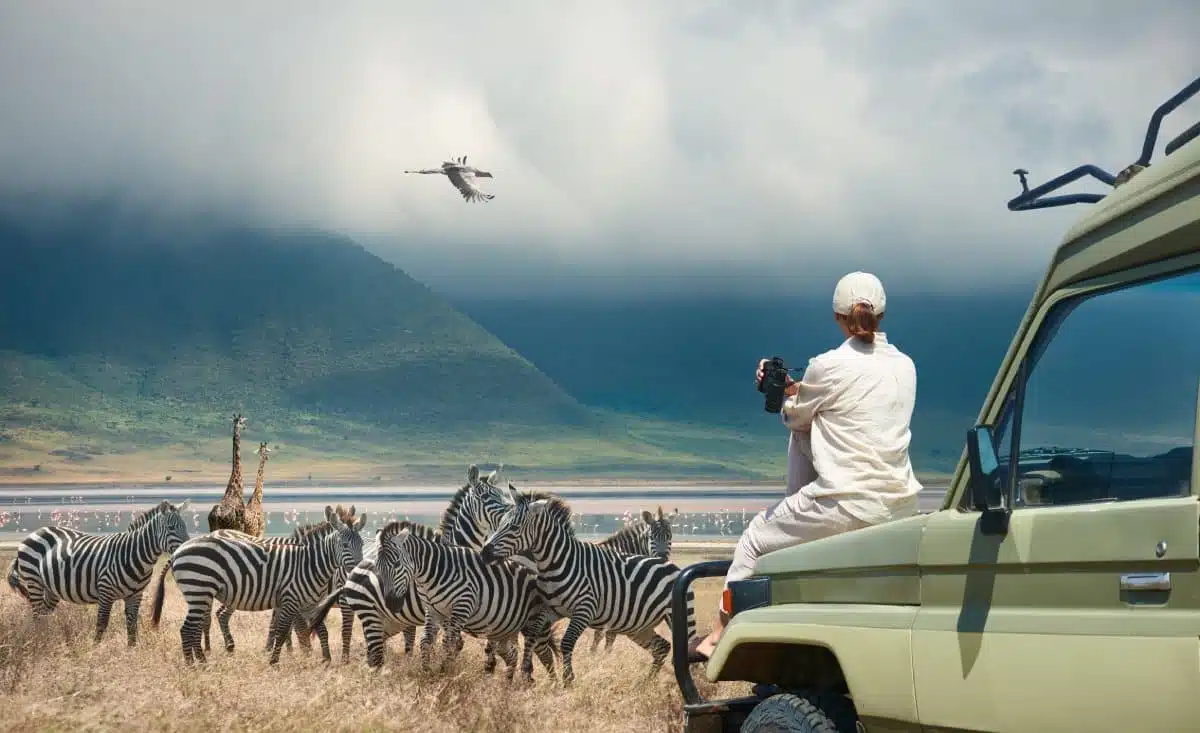Embarking on a safari to witness the majestic Big Five – lion, leopard, rhinoceros, elephant, and Cape buffalo – is a dream for many wildlife enthusiasts and nature lovers. This comprehensive guide will navigate you through the best times and places to see these magnificent creatures in their natural habitat. From the vast plains of the Serengeti to the dense bushveld of Kruger National Park, each destination offers a unique window into the world of these iconic animals. With careful planning and a bit of luck, you can experience the thrill of encountering the Big Five up close while respecting their natural environments.
The Big Five
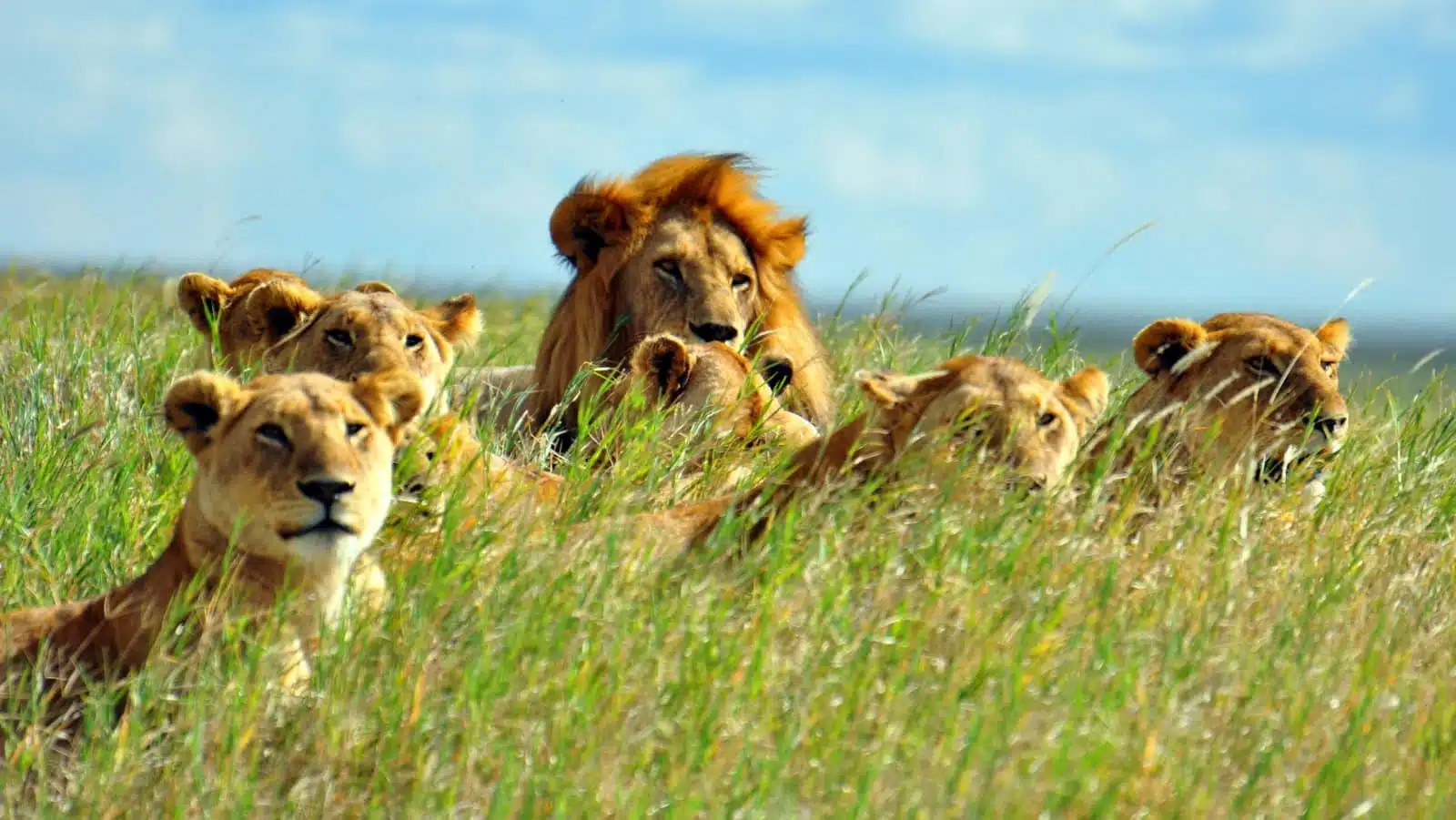
Image Credit: Shutterstock / EastVillage Images
The “Big Five” refers to five of Africa’s most iconic and majestic wildlife species: the lion, leopard, rhinoceros, elephant, and Cape buffalo. Originally coined by big-game hunters to denote the five most difficult and dangerous animals to hunt on foot, the term has since been adopted by conservationists and safari enthusiasts to highlight the importance of these species in Africa’s biodiversity and ecosystem health. The Big Five are pivotal to the ecological balance and function of their habitats and play a significant role in the cultural heritage and economic sustainability of many African regions through ecotourism. Their presence or absence indicates the overall health of the environment, making their conservation a priority for ensuring the longevity and resilience of Africa’s vast wilderness areas. Observing these creatures in their natural habitat offers a unique and profound experience, fostering a deeper appreciation for wildlife and the critical need for conservation efforts to protect these magnificent animals and their ecosystems for future generations.
1. Serengeti National Park, Tanzania
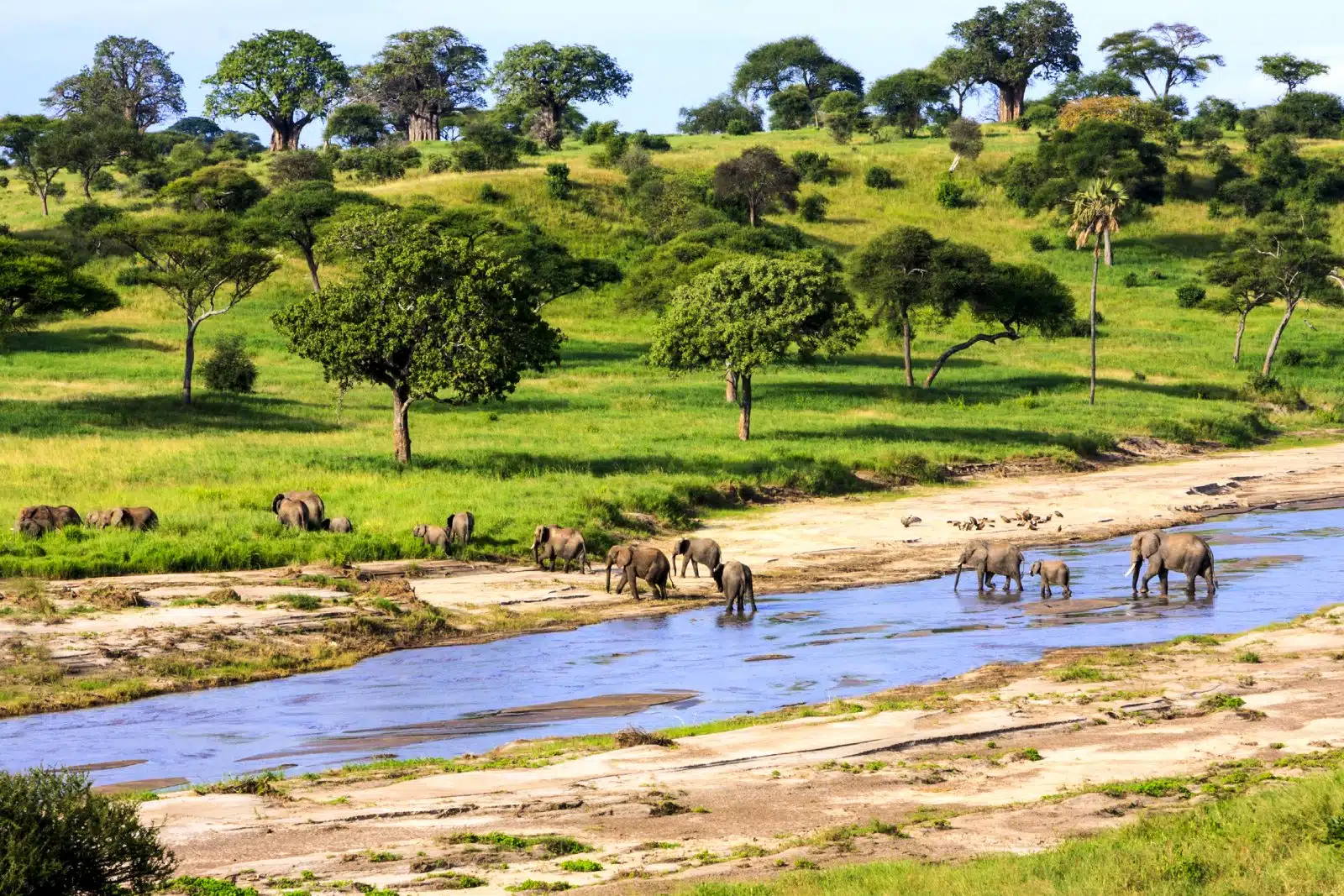
Image Credit: Shutterstock / GTS Productions
The Serengeti is synonymous with wildlife safaris and is one of the best places in Africa to see the Big Five, thanks to its sprawling savannahs and abundant wildlife populations. The Great Migration, an annual event where millions of wildebeest and zebras traverse the plains, attracts predators such as lions and leopards, offering spectacular wildlife viewing opportunities. Elephants and buffalos are resident year-round, while the elusive rhino can be spotted in the Moru Kopjes area.
Insider’s Tip: For the best chance to see all members of the Big Five, plan your visit during the dry season from June to October when animals congregate around water sources, making them easier to spot.
When to Travel: The dry season (June to October) offers the best wildlife viewing opportunities.
How to Get There: Fly into Kilimanjaro International Airport and take a short flight or drive to the Serengeti.
2. Kruger National Park, South Africa
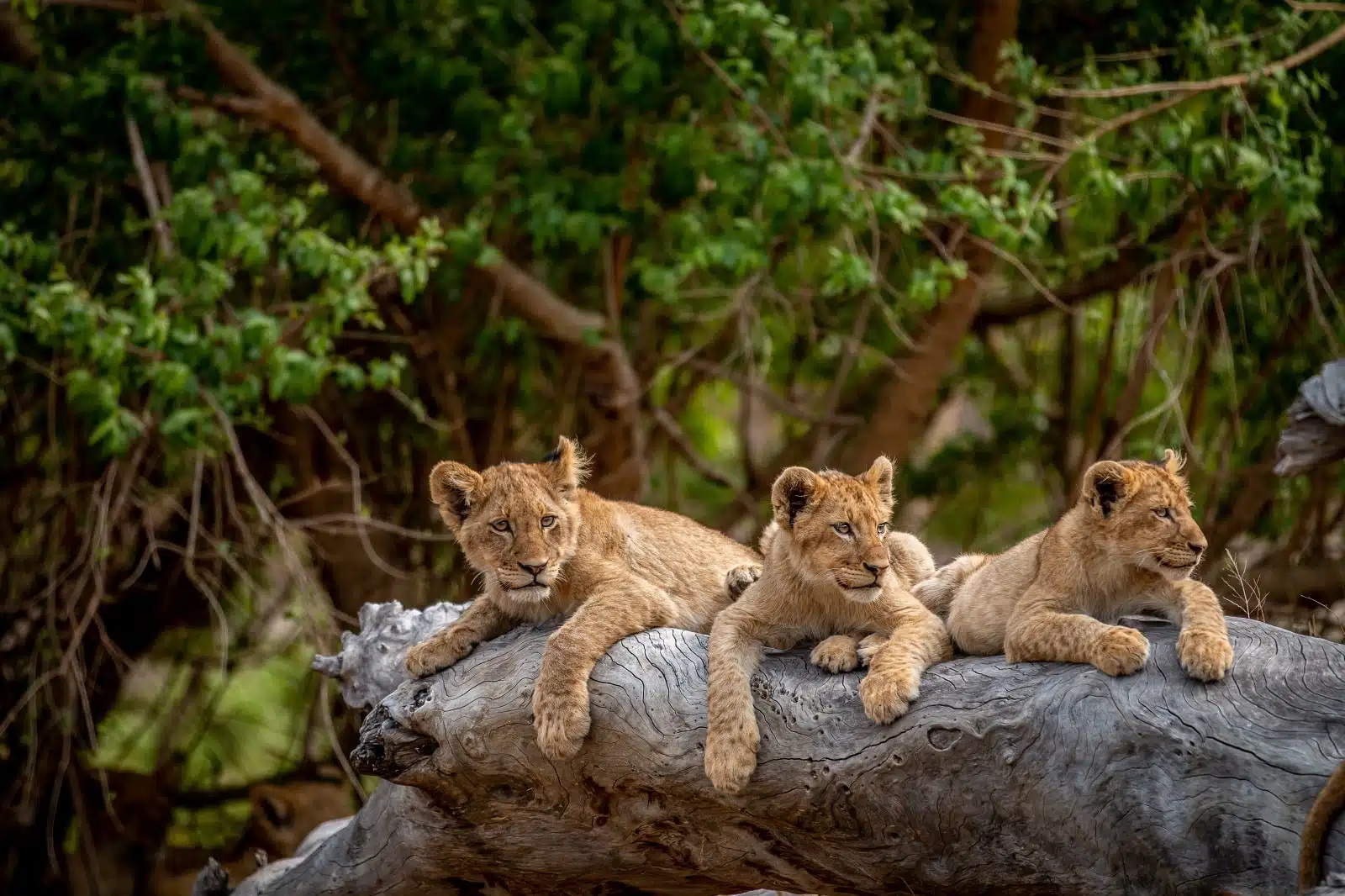
Image Credit: Shutterstock / Simon Eeman
Kruger National Park is one of Africa’s largest game reserves and offers one of the most accessible Big Five viewing experiences. Its diverse ecosystems, from dense bushveld to open grasslands, provide habitats for a wide range of wildlife, including the sought-after Big Five. The park’s extensive network of roads allows for self-drive safaris, offering flexibility and a personal encounter with the African wilderness.
Insider’s Tip: Stay at one of the private lodges in the Sabi Sand Game Reserve, adjacent to Kruger, for exclusive game drives and a higher chance of leopard sightings.
When to Travel: The dry winter months (May to September) are ideal for game viewing.
How to Get There: Fly into Johannesburg and take a connecting flight to one of the airports near Kruger, followed by a drive to the park.
3. Masai Mara National Reserve, Kenya
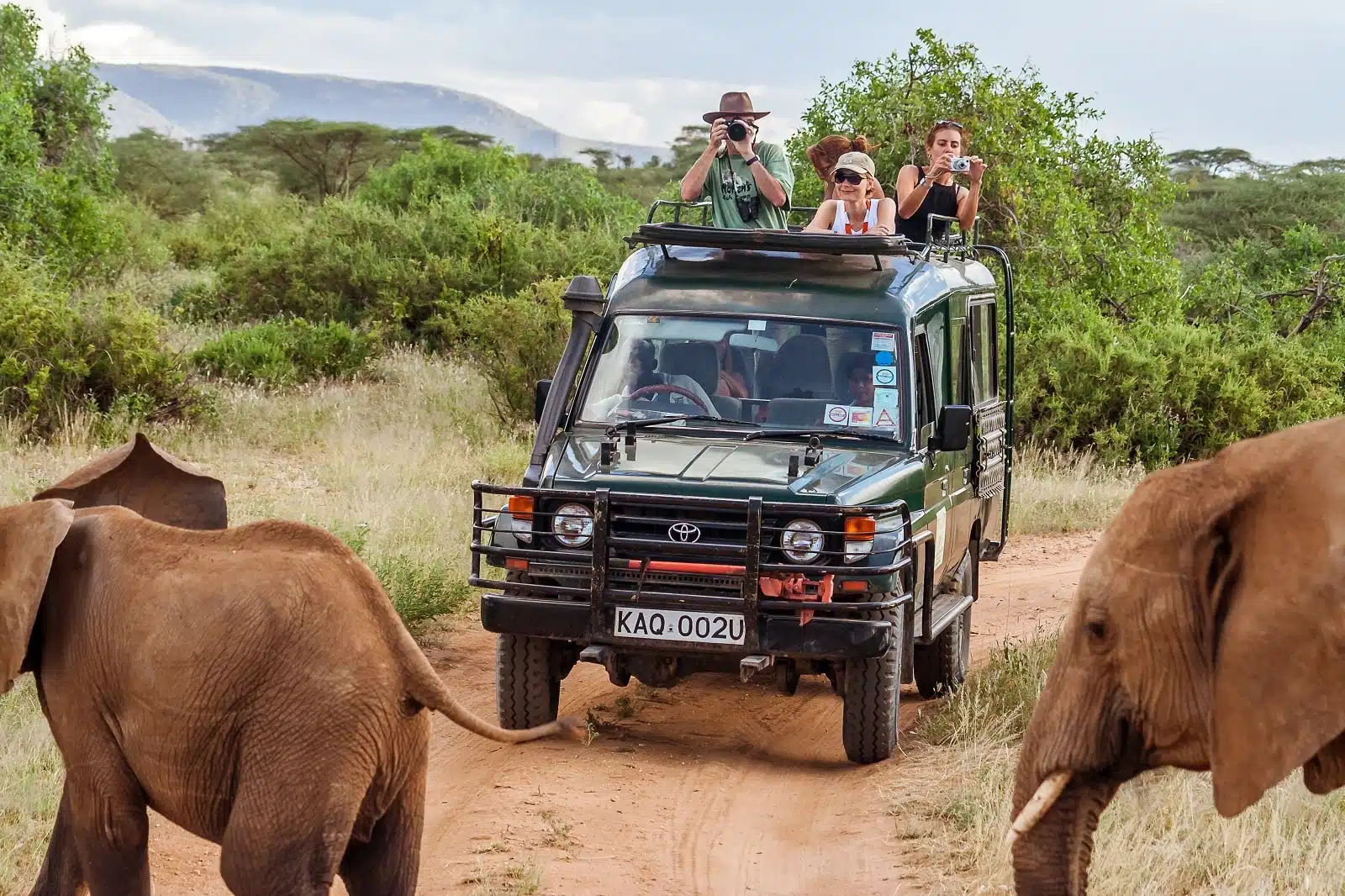
Image Credit: Shutterstock / Pierre-Yves Babelon
The Masai Mara is renowned for its exceptional population of lions, leopards, and cheetahs, along with the annual wildebeest migration, making it a prime location for observing the Big Five. The reserve’s open grasslands and the Mara River’s dramatic crossings offer unforgettable safari experiences. While rhinos are less common, the Mara Triangle offers the best chances for sightings.
Insider’s Tip: Visit during the migration months (July to October) not only for the wildebeest but also for increased predator activity.
When to Travel: July to October for the migration; however, the Big Five can be seen year-round.
How to Get There: Fly into Nairobi and then take a domestic flight to the Masai Mara.
4. Ngorongoro Conservation Area, Tanzania
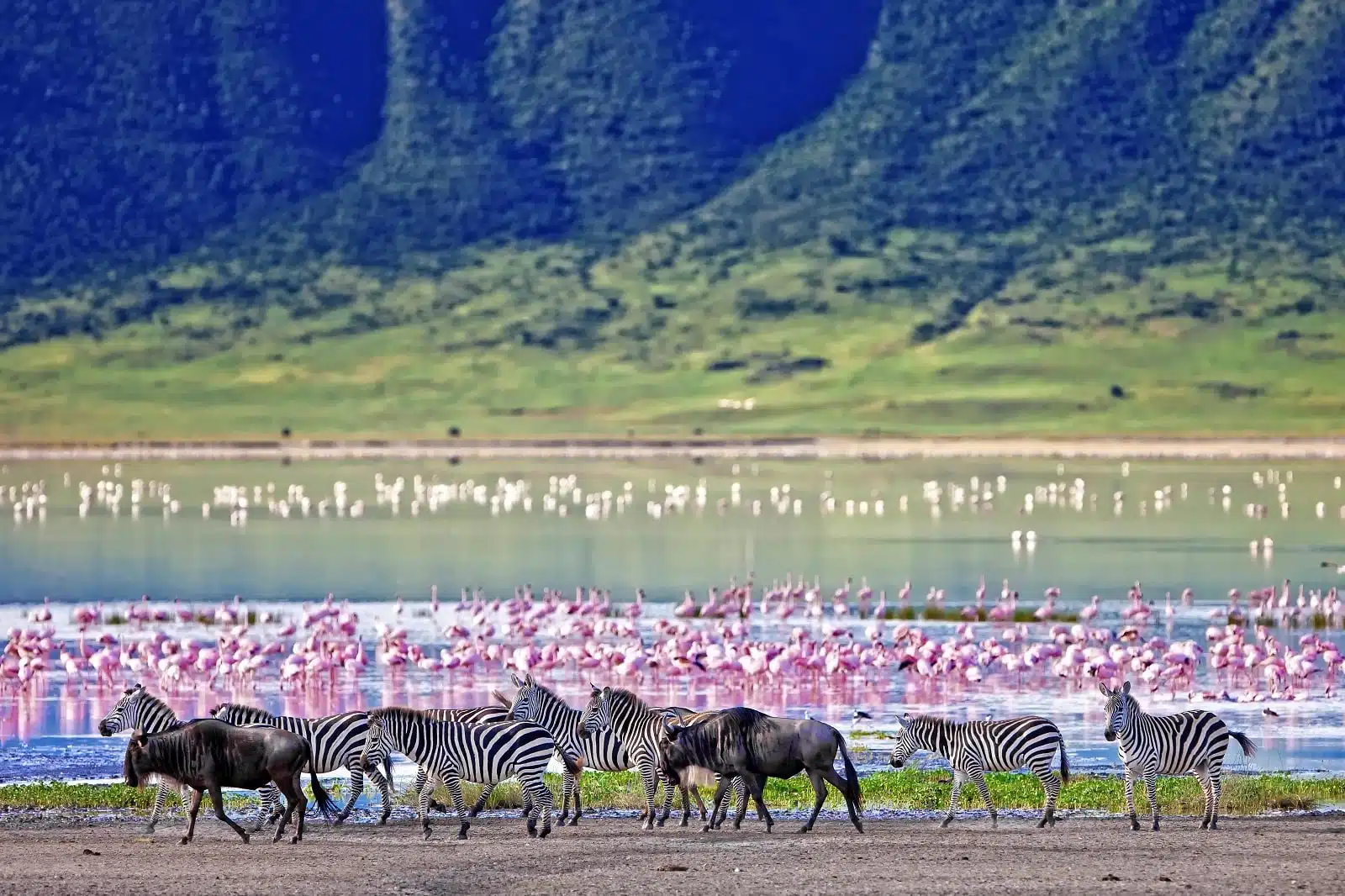
Image Credit: Shutterstock / Travel Stock
The Ngorongoro Crater, a UNESCO World Heritage site, is a vast volcanic caldera that offers some of Africa’s best Big Five viewing. Its unique ecosystem supports a dense concentration of wildlife, including a healthy population of black rhinos, which are increasingly rare in the wild. The crater floor’s open grasslands and permanent water sources attract various animals, making it a one-stop destination for Big Five sightings.
Insider’s Tip: Early morning game drives offer the best light for photography and the chance to see predators returning from their nocturnal hunts.
When to Travel: Wildlife viewing is excellent throughout the year, but the dry season (June to October) provides the best conditions.
How to Get There: Fly into Kilimanjaro International Airport and drive to Ngorongoro.
5. Chobe National Park, Botswana
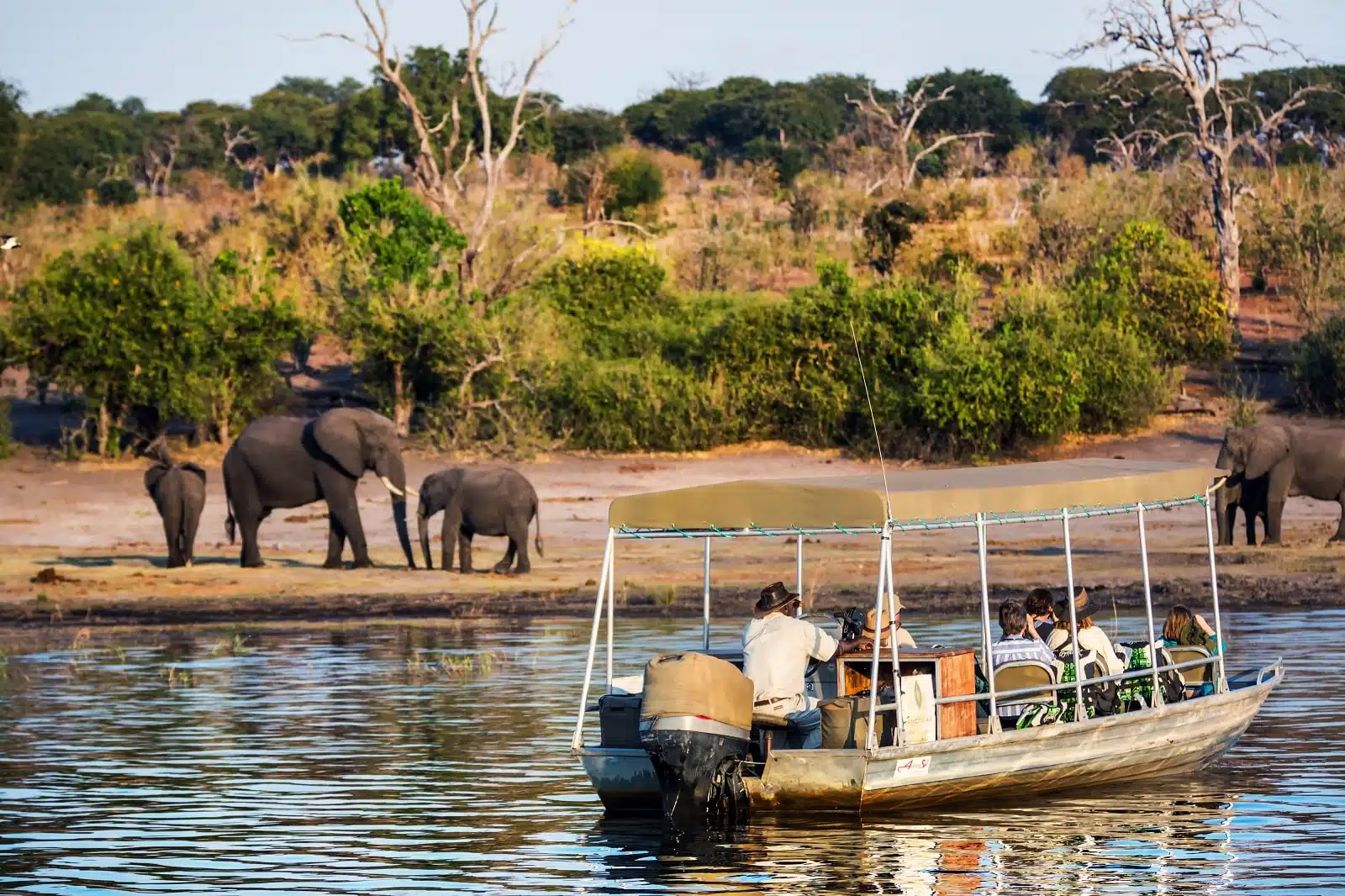
Image Credit: Shutterstock / LMspencer
Chobe National Park is famed for its large elephant herds, with populations reaching into the thousands, offering some of the most impressive elephant encounters on the continent. Alongside elephants, Chobe’s diverse habitats, including the Savuti Marsh and the Chobe Riverfront, support robust populations of lions, leopards, buffalos and a chance to see the endangered white rhinoceros.
Insider’s Tip: A boat cruise on the Chobe River provides a unique vantage point for wildlife viewing, especially during the dry season when animals gather at the water.
When to Travel: The dry season (April to October) is best for wildlife viewing, especially near the river.
How to Get There: Fly into Kasane Airport, which is the gateway to Chobe National Park.
The Bottom Line

Image Credit: Shutterstock / Janelle Lugge
Embarking on a safari to see the Big Five is an awe-inspiring experience that connects you with the raw beauty of the African wilderness. Each destination offers wonderful magic, from the vast Serengeti and Masai Mara plains to the dense Kruger bushveld and the unique Chobe and Ngorongoro ecosystems. Planning your visit during the optimal seasons and following insider tips can significantly enhance your safari experience, bringing you face-to-face with some of the planet’s most iconic wildlife. As you venture into these wild landscapes, remember that the journey is as much about the thrill of the search as it is about the sightings themselves. Let the adventure begin.
More From The Green Voyage
12 Best Practices for Sustainable Travel in 2024 – How to Travel With Minimal Environmental Impact
Unlocking Hotel Perks – A Traveler’s Guide to Maximizing Hotel Reward Programs for Optimal Benefits
Travel Hacks for Frequent Flyers – 6 Tips and Tricks to Make the Best of Air Travel
The post A Safari Guide – The Best Times and Places to See the Big Five 2024 first appeared on The Green Voyage.
Featured Image Credit: Shutterstock / soft_light.
For transparency, this content was partly developed with AI assistance and carefully curated by an experienced editor to be informative and ensure accuracy.
Tips for Trip Success
Book Your Flight
Find an inexpensive flight by using Kayak, a favorite of ours because it regularly returns less expensive flight options from a variety of airlines.
Book Your Hotel or Special Accommodation
We are big fans of Booking.com. We like their review system and photos. If we want to see more reviews and additional booking options, we go to Expedia.
You Need Travel Insurance!
Good travel insurance means having total peace of mind. Travel insurance protects you when your medical insurance often will not and better than what you get from your credit card. It will provide comprehensive coverage should you need medical treatment or return to the United States, compensation for trip interruption, baggage loss, and other situations.Find the Perfect Insurance Plan for Your Trip
